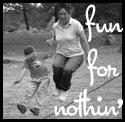 Back in the 1990s, money experts always started their money-saving tips by trotting out the same advice: to save big bucks, pay off your mortgage early. During a time of 8 to 10 percent interest rates (not so different from today's escalating ARMs, I suppose), eliminating or lowering that house debt as quickly as possible was one change that could rack up big savings.
Back in the 1990s, money experts always started their money-saving tips by trotting out the same advice: to save big bucks, pay off your mortgage early. During a time of 8 to 10 percent interest rates (not so different from today's escalating ARMs, I suppose), eliminating or lowering that house debt as quickly as possible was one change that could rack up big savings. Today, nearly every piece of financial advice starts with "Skip the daily $4 latte, and instead use that money to [invest/save for retirement/pay down debt]." And for a while, the advice fell on deaf and highly caffeinated ears. With the current economic situation, however, it seems that people are either choosing or being forced to give up their premium coffee. Recent projections from Starbucks show that the once unstoppable giant is continuing to see declining year-over-year sales in stores and is responding by closing stores, rethinking merchandising, and getting back to basics. Shareholders are now being told to expect 15 cents earnings per share, down from last year's 19 cents per share, and these projections might be rosier than what will actually play out.
The good news is that it's pretty easy to make good coffee drinks at home -- without a $1,000 cappuccino machine.
 The stovetop espresso maker (or Moka) does just that: makes espresso on the stove. You add coffee and water, put the espresso maker on a burner, and the water is put under pressure and shot through the coffee. Purists will tell you that these espresso makers actually make really strong coffee, not true espresso (which is made by forcing steam through espresso grounds), but for my palette, the taste is close enough that I can't tell a difference.
The stovetop espresso maker (or Moka) does just that: makes espresso on the stove. You add coffee and water, put the espresso maker on a burner, and the water is put under pressure and shot through the coffee. Purists will tell you that these espresso makers actually make really strong coffee, not true espresso (which is made by forcing steam through espresso grounds), but for my palette, the taste is close enough that I can't tell a difference.You'll find $90 stovetop espresso machines at specialty stores, but I don't find that pricey ones are necessary. I'm still using one I bought for $6 at Save on Fifth, a grocery store in Brooklyn, probably long gone by now. The best online prices I've found for the espresso makers are here -- about $14 plus shipping for the single-serving size. You might be able to find one in a Mexican grocery for less, however.

The milk frother froths and, in some cases, heats milk for coffee drinks. I have a stainless steel milk frother that I received as a wedding gift. To use it, I just add milk, heat it on the stove, and then pump the rod in the lid up and down, like a butter churn, to froth the milk. These used to be fairly prevalent, but have become a little harder to find, and the price is now around $30. Considering how often I've used this in the 10+ years I've had it, $30 is reasonable, but you might want to go for something a little less pricey. There are lots of frothing options here.
Some specialty drink ideas:
- Cafe au lait: No tools necessary. Heat milk in a pan until little bubbles form on the side, and then add one part milk, one part coffee to your mug. I'm lazy, so I heat the milk in my mug in the microwave, and then add hot coffee.
- Steamer: Using the frothing pitcher, pour in milk and coffee syrup of your choice. I like Torani Hazelnut and French Vanilla, and get large bottles on sale for $5 at World Market. Heat and froth the milk. I've also made steamers with honey, but I add the honey to the mug and pour the hot milk over it, as honey seems like it might muck up the milk frother.
- Latte: A latte is about 1/3 espresso, 1/3 hot milk, 1/3 foamy milk. To make one, I make a single-serving espresso. While it's going, I heat up milk in the frothing pitcher. When both are ready, I pour the hot milk into a mug, using a spoon to hold back the foam, so I'm only pouring hot milk in. Then I add the espresso into the mug, pouring it carefully down the back of a spoon so that it goes gently into the mug. Then I spoon on frothy milk, and sometimes sprinkle on some cinnamon. If you're careful in how you pour, and you're using a glass mug, the espresso, hot milk, and foamed milk settle into really pretty (and impressive) layers.
Now you can spend that saved $4 a day paying off your mortgage early.



No comments:
Post a Comment